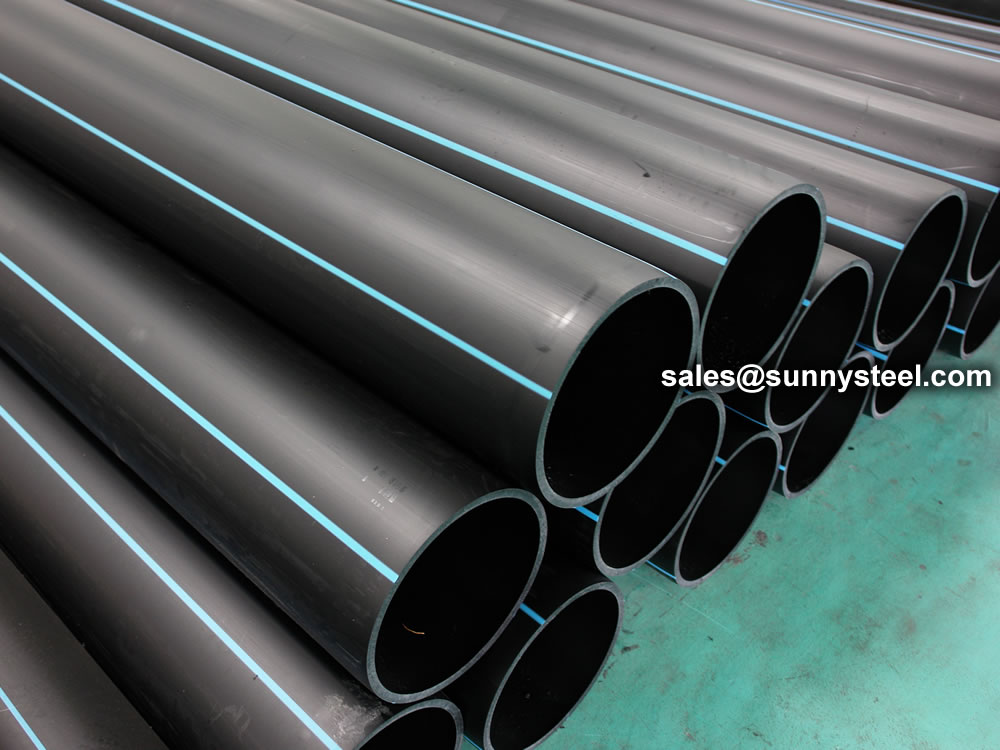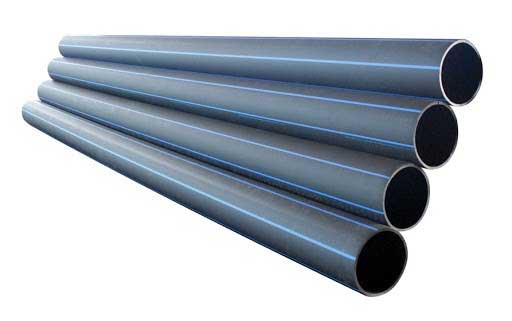Why Texas hdpe pipe manufacturer Is Leading in Modern Infrastructure
Discover the Production Process Behind High-Quality HDPE Pipe and Its Applications
The production procedure of top notch HDPE pipelines is elaborate and methodical. It begins with the choice of basic materials that enhance performance. Following this, ethylene goes through polymerization to create resin, which is after that shaped with extrusion. Quality assurance is vital, ensuring that the end product fulfills rigid criteria. The trip of HDPE pipes doesn't end with production. Their applications across numerous sectors reveal a wider importance worth examining.
Comprehending HDPE: Characteristics and Advantages

High-density polyethylene (HDPE) is a functional polycarbonate recognized for its longevity and resistance to various environmental aspects. This product displays excellent tensile toughness, making it suitable for requiring applications. Its low-density structure adds to a light-weight item, assisting in ease of dealing with and installment. HDPE additionally showcases amazing resistance to chemicals, which decreases destruction when revealed to extreme substances.
The material's low dampness absorption further improves its durability, making it ideal for use in pipelines and tank. In addition, HDPE is immune to ultraviolet (UV) radiation, making sure that products maintain their integrity also when subjected to sunlight. In addition, its adaptability enables the creation of elaborate forms without jeopardizing strength. The environmentally friendly nature of HDPE, often stemmed from recycled products, contributes to its charm, promoting sustainable techniques in manufacturing. Generally, these buildings and benefits make HDPE a recommended choice for numerous commercial and consumer applications.
Resources Option for HDPE Manufacturing
The option of raw products for HDPE manufacturing is important to validate the end product meets the desired requirements and high quality requirements. High-density polyethylene (HDPE) is largely created from polymerized ethylene, derived from fossil fuels such as gas or petroleum. The high quality of these feedstocks significantly affects the mechanical and thermal properties of the last HDPE.
Additives additionally play a substantial role in enhancing HDPE's efficiency, consisting of antioxidants, UV stabilizers, and colorants, which enhance sturdiness and resistance to ecological aspects. The option procedure have to consider not just the chemical structure of the raw materials but likewise their handling attributes to ensure efficient manufacturing.
Furthermore, the sourcing of raw products ought to prioritize sustainability and conformity with ecological guidelines, as responsible methods are imperative in today's market. Eventually, careful basic material selection lays the foundation for creating top quality HDPE pipelines ideal for varied applications.
The Extrusion Refine: Forming HDPE Pipeline
The extrusion process plays an essential role fit HDPE pipelines, starting with meticulous material prep work techniques that ensure perfect circulation and uniformity. Equally important is the style of the die, which directly influences the final measurements and surface high quality of the pipeline. Together, these aspects add considerably to the efficiency and high quality of HDPE pipeline production.
Product Preparation Techniques
Effective production of HDPE pipes starts with precise material preparation methods, particularly the extrusion process. Throughout this phase, high-density polyethylene resin is first dried out to get rid of moisture, making sure ideal flow attributes. The resin is after that fed right into the extruder, where it goes through heating and melting, changing into a viscous state. This home heating procedure is very carefully managed to preserve the material's honesty and efficiency. The molten HDPE is forced through a die, forming it into a continual pipeline kind. Appropriate temperature management during extrusion is vital, as it straight influences the product's residential properties and the last item discover this high quality. When shaped, the HDPE pipe is cooled and cut to specified sizes, all set for subsequent processing and applications.
Die Style Relevance
Accuracy in die style plays an essential function in the extrusion process of HDPE pipelines. The die functions as the final shaping device, straight affecting the pipe's dimensions, wall surface thickness, and surface coating. A properly designed die assurances consistent material circulation, minimizing issues such as irregularities and vulnerable points. The geometry of the die should be enhanced to fit the specific residential or commercial properties of HDPE, Go Here including its thickness and thermal habits during extrusion. Furthermore, the cooling rate of the product as it goes through the die can considerably impact the pipeline's structural honesty. Subsequently, buying innovative die innovation is essential for producers intending to produce high-grade HDPE pipes that fulfill market standards and customer assumptions.
Quality Assurance Measures in HDPE Manufacturing
Different variables affect the high quality of HDPE pipeline production, efficient high quality control procedures are important to guarantee consistency and reliability in the last product (hdpe pipe suppliers Midland TX). Secret quality control techniques consist of rigorous product examination, validating that the raw polyethylene meets well-known criteria for purity and thickness. During the extrusion procedure, criteria such as temperature level, stress, and cooling time are carefully checked to maintain dimensional precision and structural integrity
Additionally, post-production testing is crucial; suppliers usually perform hydrostatic tests to evaluate the pipeline's stamina and resistance to pressure. Aesthetic assessments for surface problems even more enhance quality guarantee. Qualification from appropriate standards companies, like ASTM or ISO, offers an extra layer of integrity. By executing these extensive top quality control actions, suppliers can decrease flaws, boost performance, and ensure that the HDPE pipelines fulfill the certain requirements of numerous applications, inevitably bring about client fulfillment and count on in the item.
Applications of HDPE Pipe Throughout Industries
HDPE pipelines are used across various markets because of their toughness and adaptability. In water distribution systems, they ensure efficient delivery, while in wastewater monitoring, they offer dependable services for waste transportation. Additionally, farming irrigation networks benefit from HDPE's resistance to deterioration and flexibility, making it a suitable selection for contemporary farming practices.
_-_Post_di_Facebook_-_Dimensioni_personalizzate_(1)_60cafdf20856f.png)
Water Circulation Equipments
A significant variety of industries depend on high-density polyethylene (HDPE) pipelines for effective water circulation systems. Understood for their durability and resistance to corrosion, HDPE pipes are widely utilized in community water supply networks, agricultural irrigation, and commercial applications. Their light-weight nature assists in easy handling and setup, reducing labor expenses and time. In addition, HDPE pipelines can accommodate different stress degrees, making them suitable for both low and high-pressure systems. American Plastics HDPE Pipe for Oilfield. The flexibility of the material enables for smooth integration into existing framework, reducing the requirement for substantial excavation. HDPE's resistance to chemical seeping warranties that the water delivered continues to be secure and clean, making it an excellent selection for keeping the high quality of potable water across various sectors.
Wastewater Monitoring Solutions
Efficient water circulation systems also lead Check Out Your URL the way for innovative wastewater administration solutions, where high-density polyethylene (HDPE) pipes play a substantial role. Distinguished for their sturdiness and resistance to deterioration, HDPE pipes are suitable for transporting wastewater in different setups. Their adaptability allows for easy installment in complex environments, lessening the demand for extensive excavation. Furthermore, HDPE's smooth indoor surface area reduces friction, boosting circulation rates and effectiveness. These pipelines are additionally resistant to chemical leaching, ensuring that contaminants do not endanger the surrounding environment. Industries, towns, and therapy facilities increasingly count on HDPE pipes for their dependability and longevity, making them a favored option for contemporary wastewater management systems. This adaptability highlights the important relevance of HDPE pipes throughout countless applications.
Agricultural Irrigation Networks
Agricultural irrigation networks profit greatly from the use of high-density polyethylene (HDPE) pipelines, which supply reliable and reliable water shipment to plants. HDPE pipes are lightweight, making them easy to transfer and mount, while their versatility permits different setups in diverse surfaces. These pipes demonstrate excellent resistance to deterioration, chemicals, and UV radiation, guaranteeing durability in harsh farming atmospheres. Additionally, their smooth indoor surface minimizes rubbing loss, enhancing water flow and lowering power prices connected with pumping. The durability of HDPE pipes, typically exceeding 50 years, adds to reduce maintenance and replacement expenses. Farmers significantly depend on HDPE pipes to enhance watering performance and advertise lasting agricultural methods, inevitably leading to improved plant yields and source conservation.

Future Fads in HDPE Pipeline Modern Technology
As the need for lasting and effective facilities grows, advancements in HDPE pipeline modern technology are positioned to transform numerous industries. Arising patterns consist of the combination of smart modern technologies, such as sensing units and IoT capabilities, which help with real-time surveillance of pipe conditions, minimizing maintenance expenses and protecting against leaks. Furthermore, the growth of advanced manufacturing methods, such as 3D printing, is making it possible for the production of complicated, tailored pipeline styles that provide to details task requirements.
The focus on recycling and round economic climate techniques is driving the technology of HDPE pipelines made from recycled products, boosting sustainability. Improved jointing techniques, such as electro-fusion and mechanical fittings, are also improving installation effectiveness and integrity. The growing focus on ecological policies is pressing producers to take on greener production processes, guaranteeing that HDPE pipelines not just fulfill market standards but also foster an even more lasting future for facilities advancement.
Frequently Asked Concerns
How Does HDPE Compare to Various Other Plastic Materials?
HDPE surpasses lots of other plastic products relating to toughness, chemical resistance, and flexibility. Its reduced density and high tensile strength make it excellent for different applications, typically surpassing choices in both performance and long life.
What Are the Environmental Influences of HDPE Production?
The ecological impacts of HDPE manufacturing include greenhouse gas discharges, energy intake, and prospective pollution from making processes. In addition, incorrect disposal can cause dirt and water contamination, increasing problems about long-term ecological results.
Can HDPE Pipeline Be Recycled?
Yes, HDPE pipelines can be recycled. Many facilities accept utilized HDPE for processing, changing it into new products. This reusing contributes to sustainability initiatives, decreasing plastic waste while conserving resources and energy in the manufacturing cycle.
What Is the Lifespan of HDPE Pipeline?

Just How Do Temperature Variants Affect HDPE Pipeline Performance?
Temperature variants significantly impact HDPE pipeline efficiency, influencing adaptability and strength. Heats can lead to softening, while reduced temperatures might trigger brittleness, eventually affecting the pipeline's durability and viability for different applications in varied settings.